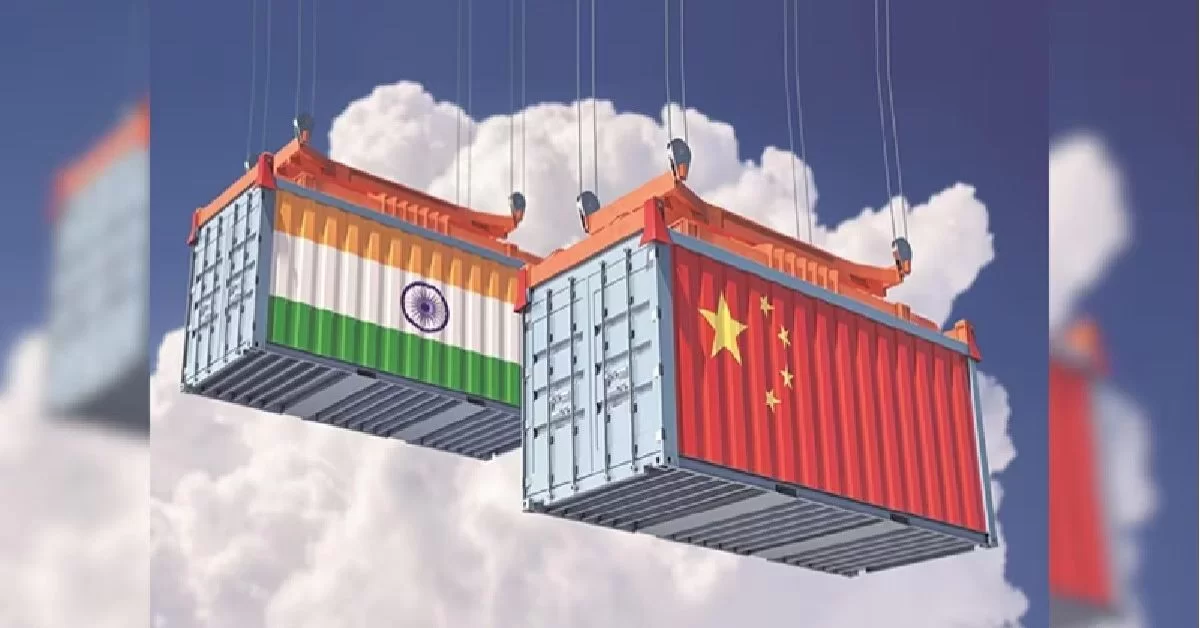- Courses
- GS Full Course 1 Year
- GS Full Course 2 Year
- GS Full Course 3 Year
- GS Full Course Till Selection
- CSAT
- 5 LAYERED ARJUNA Mentorship
- Public Administration Optional
- Online Program
- GS Recorded Course
- NCERT Batch
- Polity Module Course
- Geography Module Course
- Economy Module Course
- AMAC Module Course
- Modern India, Post Independence & World History Module Course
- Environment Module Course
- Governance Module Course
- Science & Tech. Module Course
- International Relations and Internal Security Module Course
- Disaster Management Module Course
- Ethics Module Course
- Essay Module Course
- Current Affairs Module Course
- ABOUT US
- OUR TOPPERS
- TEST SERIES
- FREE STUDY MATERIAL
- VIDEOS
- CONTACT US
India’s Trade Deficit with China Touches $99.2 Billion
India’s Trade Deficit with China Touches $99.2 Billion
18-04-2025

- India’s trade deficit with China soared to $99.2 billion in the fiscal year 2024–25, raising concerns over growing dependency and strategic vulnerabilities.
- This sharp increase is primarily due to a significant surge in imports of electronic goods, such as EV batteries and solar cells, along with other consumer durables.
- Meanwhile, India’s exports to China declined to just $14.3 billion during the same period, further widening the gap.
Key Concerns Arising from Rising Trade Deficit with China
- Pressure on Domestic Manufacturing: Low-cost imports from China put Indian manufacturers, especially in sectors like steel, chemicals, and electronics, at a serious disadvantage.
- Strategic Supply Chain Dependence: Persistent reliance on Chinese goods exposes India to external shocks and vulnerabilities, especially in critical sectors.
- National Security Implications: China could potentially leverage India’s dependency during border tensions or diplomatic negotiations, posing a strategic risk.
- Risk of Trade Diversion: Owing to high US tariffs, Chinese goods could be redirected towards India, increasing the risk of dumping at unfair prices.
- Bypassing US Trade Barriers: India could unintentionally become a transit point for Chinese goods into US markets, damaging India’s strategic ties with the US.
- Economic Impact: A continuously rising deficit leads to a sustained outflow of foreign exchange, impacting India’s external account stability.
Key Steps Taken by India to Address Trade Deficit with China
- Boosting Domestic Production: Through initiatives like the Production Linked Incentive (PLI) scheme and Make in India, India aims to strengthen local industries and reduce import dependence.
- Building Local Supply Chains: Creation of Bulk Drug Parks and support for indigenous production in pharma and electronics to reduce reliance on Chinese inputs.
- Export Promotion Measures: Incentives like the RoSCTL (Rebate of State and Central Levies and Taxes) and the Interest Equalisation Scheme (IES) aim to make Indian exports more competitive globally.
- Trade Remedies and Regulatory Actions: Use of tools like Anti-Dumping Duties, Safeguard Measures, and the Market Access Initiative (MAI) scheme to protect domestic industries and ensure fair trade practices.
|
Also Read |
|
UPSC Foundation Course |
|
| UPSC Monthly Magazine | CSAT Foundation Course |




